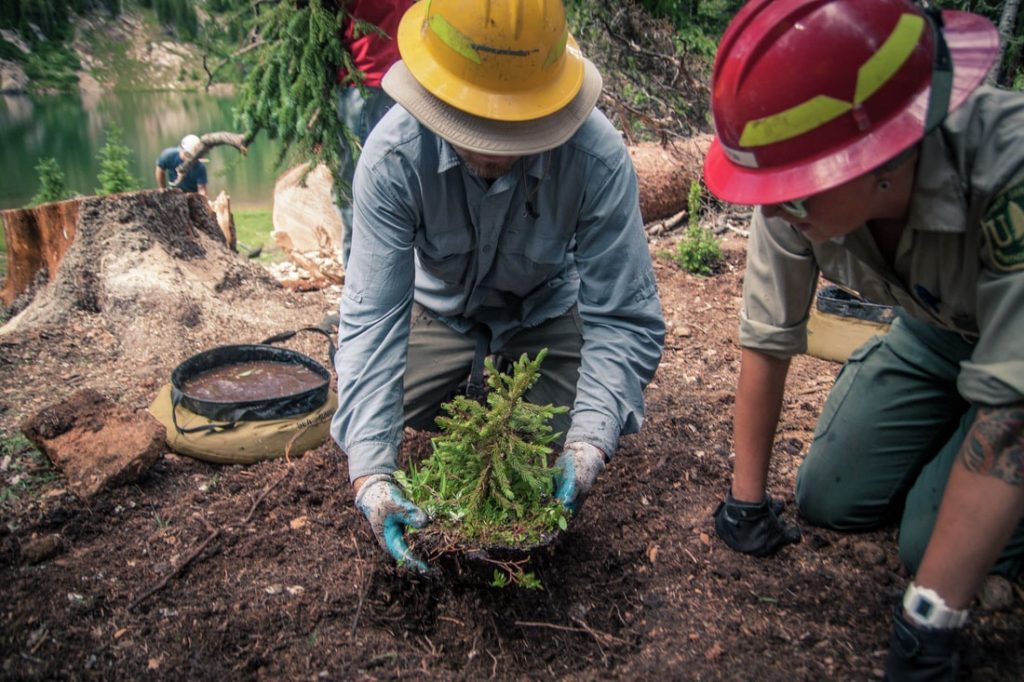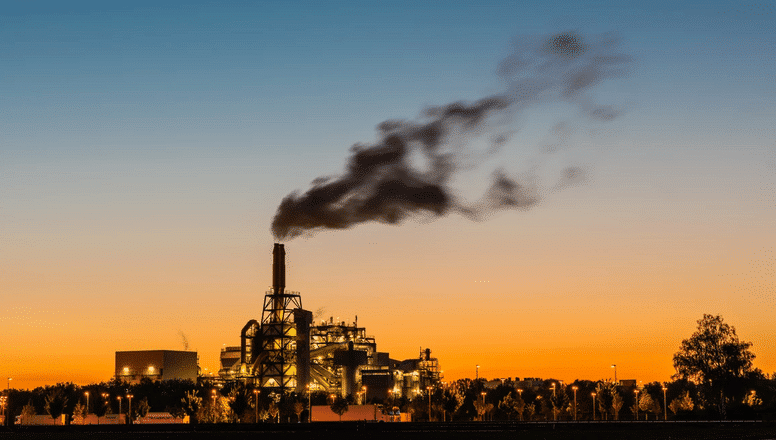You see these buzz words in the news, on the internet, and even in the newspaper. Carbon emissions, air pollution, and greenhouse gases are everywhere. No, we’re being serious, they are literally everywhere. They’re in the air we breathe (and exhale), the food we eat, and the products we purchase and use.
But, with great knowledge comes great responsibility! The more you know about these human-caused issues, the better equipped you can be to make a positive difference. By the end of this read, you’ll have a little more knowledge on how to understand and reduce your own carbon footprint.

Air Pollution
Air pollution refers to the release of pollutants into the air—pollutants which are detrimental to human health and the planet as a whole. According to the World Health Organization (WHO), each year air pollution is responsible for nearly seven million deaths around the globe. Nine out of ten human beings currently breathe air that exceeds the WHO’s guideline limits for pollutants, with those living in low- and middle-income countries suffering the most.
Greenhouse Gases
By trapping the earth’s heat in the atmosphere, greenhouse gases lead to warmer temperatures, which in turn lead to the hallmarks of climate change: rising sea levels, more extreme weather, heat-related deaths, and the increased transmission of infectious diseases. In 2018 carbon dioxide, otherwise known as carbon emissions, accounted for 81 percent of the country’s total greenhouse gas emissions, and methane made up 10 percent.

Carbon Emissions
What are they?
Carbon, in its most basic form, is an element. In fact, it’s the most common element for life on Earth. From the air we breathe to the crops we grow, and the chemical makeup of our own bodies, carbon is literally the basis for life.
When we talk about carbon emissions, we’re focusing specifically on carbon dioxide, or CO2. Naturally, CO2 releases into the atmosphere in a ton of ways. The largest source of natural carbon emissions is from the exchange of carbon dioxide between the oceans and the atmosphere. Animals and plants also emit CO2 through the process of respiration (breathe in oxygen, breathe out CO2). And, when these plants and animals decompose, organisms within the soil respire to produce energy and emit more CO2 into the atmosphere.
Nature keeps most of these emissions in balance. Plants absorb CO2 through photosynthesis, and oceans absorb just about as much carbon dioxide as they let off. Carbon cycles through our air, water, and soil in a continuous process that supports life on Earth.

So, why are we so concerned with carbon emissions?
To summarize, since the industrial revolution, humans have created way more carbon emissions than our planet can process. When we extract, refine, transport, and burn fossil fuels like coal, natural gas, and oil, we release extra carbon and other greenhouse gasses into the atmosphere.
We also cut down large expanses of CO2-absorbing trees to make way for agriculture and new developments or collect lumber to create new products. When these trees burn or decompose, they emit even more CO2. By removing forests, we also effectively remove the natural systems that absorb and store carbon.
So, basically, CO2 is one of the greenhouse gases that absorbs radiation and prevents heat from escaping our atmosphere. This excess heat creates disrupted weather patterns, higher global temperature averages, and *drum roll*…climate change.
What can we do?
It’s no secret that lowering levels of atmospheric carbon is a hot topic, literally and figuratively. There are two main ways to fix this problem. The first option is to avoid the situations that cause it in the first place. The second is to mend what’s already been done. When you apply this thinking to carbon emissions, it means you can either lower your carbon footprint, or offset it.

Lowering CO2
On the personal level, there are many ways to lower your impact. Bike to work, eat less meat, buy less stuff, the list goes on and on.
When companies get involved, the impact gets even bigger. Powering factories through renewable energy, reducing transport between different steps of production, and sourcing materials that aren’t made from petroleum are all awesome ways companies are making changes in their footprint.
Offset CO2
What is carbon offsetting? A carbon offset is an amount of money you can pay for a project that reduces greenhouse gases somewhere else. If you offset one ton of carbon, the offset will help capture or destroy one ton of greenhouse gases that would otherwise have been released into the atmosphere. Offsets also promote sustainable development and increase the use of renewable energy.

The Carbon Offset Company offers individuals easy options to autopilot your carbon offset and live your life carbon-neutral!
We partner with individuals and businesses to plant trees across the globe! Tree planting reaches far beyond carbon reduction. They provide homes for wildlife, and in areas like Madagascar, the crab and fish populations provide additional food sources and income for the locals.
In addition to the environmental benefits, we employ people from local communities. This extends our impact far beyond environmentalism. These are the building blocks of a long-lasting and sustainable restoration project.


Hello, I would like to subscribe for this webpage to obtain most up-to-date updates, therefore where can i do it please help out.
Everyone loves it when folks get together and share views.
Great website, keep it up!
We are a group of volunteers and opening a new scheme in our community.
Your web site offered us with valuable info to work
on. You’ve done an impressive job and our entire community will be grateful
to you.